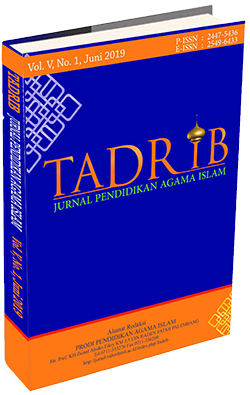Analysis of Internal and External Efficiency Through the Value for Money Model in Educational Institutions: A Case Study at SDN Jombor, Jumo District, Temanggung Regency
DOI:
https://doi.org/10.19109/tadrib.v11i2.29287Keywords:
Internal Efficiency, External Efficiency, Value for Money, Resource ManagementAbstract
This study aims to analyze the internal and external efficiency of educational institutions through the Value for Money approach at SDN Jombor, Jumo District, Temanggung Regency. Value for money serves as a performance evaluation model that focuses on three leading indicators: economy, efficiency, and effectiveness in managing educational resources. This research employs a qualitative approach, utilizing a case study method. Data were collected through in-depth interviews, participatory observation, and documentation, and analyzed descriptively. The findings indicate that the school has attempted to implement the principles of economy in budget management, efficiency in the use of human and material resources, and effectiveness in achieving educational objectives. However, several challenges remain, such as the lack of teacher training and limited internal supervision. The novelty of this study lies in its application of the Value for Money framework within the context of public primary schools, a context that is still rarely explored empirically. This research makes a theoretical contribution to the development of value-based evaluation models in educational management and a practical contribution to formulating policies that enhance transparency, accountability, and the quality of education services at the elementary school level.
References
Akor, I. A. (2022). Internal efficiency and the challenge of educational management in Nigeria: A critical overview. Global Educational Research Journal, 10(2), 5–10.
Association, E. U. (2019). Efficiency, effectiveness, and value for money at universities.
Aziz, M. (2017). Pembiayaan dan efisiensi pendidikan. Jurnal Pendidikan dan Kebudayaan, 2(2), 123–135.
Creswell, J. W. (2018). Research design: Qualitative, quantitative, and mixed methods approaches (5th ed.). SAGE Publications.
Dufitumukiza, A. (2020). Students' internal efficiency in public day schools in the Ngoma Sector, Huye District, Rwanda. International Journal for Innovation Education and Research, 8(4), 391–398. https://doi.org/10.31686/ijier.vol8.iss4.2296
Gavino, Z. C., & Mariani, M. J. P. (2022). The internal efficiency of the College of Engineering and Information Technology. International Journal of English Language Studies, 7(6), 623–630.
Halim, A., & Kusufi, M. S. (2018). Analisis value for money pada laporan akuntabilitas kinerja instansi pemerintah (LAKIP) Dinas Pendidikan Provinsi Riau. Economics, Accounting and Business Journal, 1(1), 198–211.
Hidayat, A. (2020). Analisis efisiensi eksternal pendidikan kejuruan di Jawa Tengah. Jurnal Pendidikan Kejuruan, 12(1), 67–78.
Mardiasmo. (2002). Akuntansi sektor publik (1st ed.). Andi Publishing.
Mikušová, M, B., Šebo, J., & Štrangfeldová, J. (2020). Value for money in organizations providing public education services. Naše Gospodarstvo Our Economy, 66(2), 62–70.
Miles, M. B., Huberman, A. M., & Saldaña, J. (2014). Qualitative data analysis: A methods sourcebook (3rd ed.). SAGE Publications.
Mulyadi, D. C. S. P., & Asy’ari, F. (2024). Resource Management Strategies to Improve Education Quality in Primary Schools. Indonesian Journal of Education, 4(2), 465–477.
Mulyasa, H. E. (2022). Manajemen pendidikan karakter. Bumi Aksara.
OECD. (2022). Value for money in school education: Smart investments, quality outcomes, equal opportunities.https://doi.org/10.1787/baf1876f-en
Priyono. (2017). Efisiensi dalam pembiayaan pendidikan untuk meningkatkan mutu. Jurnal Eklektika, 5(2), 87–94.
Psacharopoulos, G. (1985). Analyzing the external and internal efficiency considerations in education.
Putri, P. (2023). Analisis efektivitas kinerja dengan value for money berdasarkan laporan kinerja instansi pemerintah: Studi pada Dinas Pendidikan Kota Bogor. Eprints Universitas Pakuan.
Rahmawati, D. (2019). Analisis efisiensi internal pendidikan dasar di Kabupaten Bantul. Jurnal Pendidikan Dasar, 10(2), 1–15.
Roseno, I., & Wibowo, U. B. (2019). Efisiensi eksternal pendidikan kejuruan di Kota Yogyakarta. Jurnal Akuntabilitas Manajemen Pendidikan, 7(1), 15–24.
Slameto. (2010). Belajar dan faktor-faktor yang mempengaruhinya (Edisi revisi). Rineka Cipta.
Sugiyono, D. (2017). Metode penelitian kuantitatif, kualitatif, dan R&D. Alfabeta.
Sulastiningsih, & Sulistyowati, I. (2015). Pengukuran kinerja berbasis value for money: Studi pada SMP Negeri 2 Banjarnegara. Jurnal Kajian Bisnis, 23(1), 1–13. https://doi.org/10.32477/jkb.v23i1.168
Susilowati, E. (2018). Efisiensi eksternal pendidikan dan dampaknya terhadap kesejahteraan masyarakat. Jurnal Pendidikan Ekonomi, 6(1), 45–56.
Sutrisno, S., & Kurniawan, A. (2020). Kolaborasi eksternal dalam meningkatkan efektivitas kinerja satuan pendidikan. Jurnal Pendidikan dan Pengajaran, 53(2), 210–218.
Wibowo, A., & Wiyono, B. B. (2021). Efisiensi internal pada sekolah dasar: Studi pada SD Negeri di Jawa Timur. Jurnal Manajemen Pendidikan, 9(1), 23–34.
Winch, C. (2021). Value for money in education. NORRAG, 1–10.
Wulandari, Y., & Muh Misdar, A. S. S. (2021). Efektifitas peningkatan kesadaran beribadah siswa MTs 1 Al-Furqon Pampangan Kecamatan Pampangan Kabupaten Ogan Komering Ilir. Jurnal PAI Raden Fatah, 3(4), 405–418.
Yanti, S. H., & Akmal Hawi, S. S. (2021). Pengaruh penerapan strategi firing line terhadap pemahaman siswa pada mata pelajaran Pendidikan Agama Islam kelas VII di SMP N Sukaraya Kecamatan Karang Jaya Kabupaten Musi Rawas. Jurnal PAI Raden Fatah, 3(1), 55–65. https://doi.org/10.19109/pairf.v3i1.5324
Yin, R. K. (2015). Case study research: Design and methods (5th ed.). SAGE Publications.
Yulianti, R. (2021). Penerapan value for money dalam pengelolaan anggaran pendidikan. Jurnal Akuntansi dan Manajemen, 16(1), 78–89.














